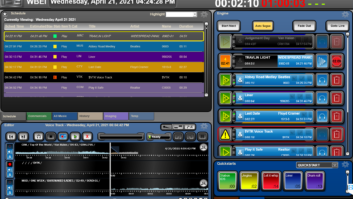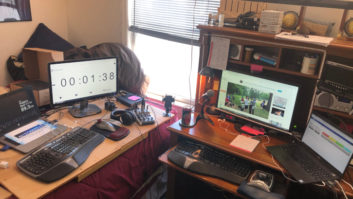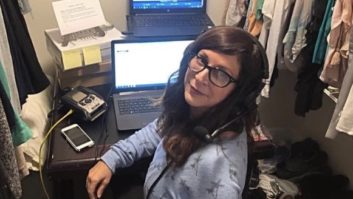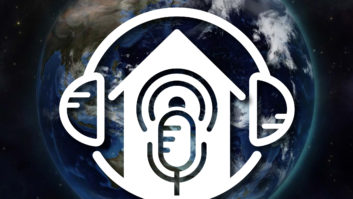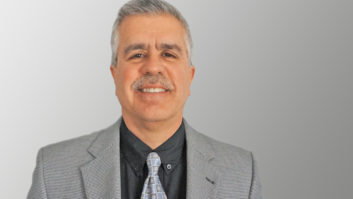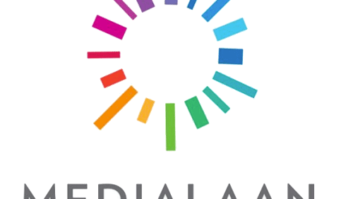Challenges Ahead as Groups Coordinate Digital Promotion and Programming of Multicast Channels
NEW YORK: “Finally.”
This was the nearly unanimous reply among station managers and suppliers asked by Radio World for reaction to news that major radio groups will promote HD Radio and multicasting in an organized way.
Yet the work of telling consumers and automakers about HD Radio is just beginning. The alliance wants to encourage lower prices for receivers, persuade automakers to install units in vehicles and convince the public to demand that retailers carry the radios. Infinity Broadcasting Chairman/CEO Joel Hollander thinks it could take two to seven years to reach these goals.
A year ago this week, major radio groups announced their intention during the Consumer Electronics Show to coordinate efforts to promote HD Radio. In December, eight of those groups formed an alliance to promote terrestrial digital radio. They are Bonneville, Citadel, Cumulus, Clear Channel, Emmis, Entercom, Greater Media and Infinity.
Ibiquity President/CEO Robert Struble termed the news “huge.”
The development of HD Radio has been a technical story to this point, he said; now radio groups “are saying they will use their collective muscle and ability to speak to our listeners in ways that make sense to them and we’re going to sell some HD Radios.”
About 600 stations are now broadcasting digital/analog signals; 70 of those are multicasting, he said.
Now radio has something to promote, Struble said. If 2005 was when HD-R infrastructure was set into place in many markets, 2006 “is going to be the first year we reach out to the consumer.”
Monetary contributions
For roughly the first 18 to 24 months, said Peter Ferrara, president and chief executive of the alliance, multicast channels will carry no commercials. The owners in the alliance have agreed that each of their digital stations will broadcast only one multicast channel, though more are technically possible.
The alliance plans to announce programming and promotional efforts for the top 25 markets early this year.
Many questions remained after the December announcement. For instance, will consumers be encouraged to buy an “HD Radio” or an “HD2 Radio” or something else? According to sources in the receiver community, the broadcast alliance made its announcement earlier than planned because it was becoming harder to keep details under wraps.
Ferrara, formerly vice president of special projects for Clear Channel and partner and COO of Granum Communications, said the alliance hoped to give the broadcast community more specifics in the New Year.
Ferrara said charter members made commitments worth more than $200 million, in 2006 advertising inventory on their stations as well as cash, to launch digital radio and to foster relationships with consumer electronics retailers and automakers.
Alliance members declined to specify their dollar contributions or the ratio of ad inventory vs. dollars, but they expect ads to make up the bulk of the commitment.
Shortly after the announcement, Struble said broadcasters must catch up to satellite radio in promoting HD Radio. He said XM and Sirius have spent a combined $750 million on promotion.
Alliance members believe consumers will want digital local radio. Entercom CEO David Field told Radio World, “If you’re a consumer you have two value propositions. One is a bucket of channels that you have to pay for; and the other is a bucket of channels that you don’t have to pay for. Which is the better option?”
NAB President David Rehr attended the event. So did his predecessor, Eddie Fritts. Rehr called the HD Radio alliance an “historic” announcement. In a statement, he said it “sends an unmistakable signal that local radio’s best days are still ahead.”
Consumers, he said, will benefit from “scores of additional program formats and improved signal clarity, coupled with community-based news, weather and traffic reports that remain hallmarks of free radio.”
Building awareness
Clear Channel Communications President/CEO Mark Mays said, “We want to continue to evolve radio. What we need to do is take it to the next level. We’ve made this technical investment. We need to get better at marketing it and spend the resources to drive the volume and bring price points down so people buy the radios.”
Any U.S.-based radio company, whether a standalone station or a group, can join the alliance.
Hollander, Mays and Greater Media President/CEO Peter Smyth form the oversight management committee for the alliance, which has incorporated.
Ferrara receives a salary to head the alliance and makes his headquarters in Orlando. No additional alliance-specific staff has been appointed at the moment, although Ferrara has hired a PR firm.
Hollander said he hoped more groups would join after the ABC Radio station sale is completed. Wall Street was watching as Walt Disney Co. reportedly hoped for a sale of its radio assets by the end of 2005.
A few days after the alliance announcement, Ferrara said other broadcasters were expressing interest in membership. He urged any interested broadcaster to sign up by Dec. 30. The group then plans to proceed with its first round of format selection for multicast channels in the top 25 markets.
Ferrara could not speculate on when the first format selections would be completed.
In order to join the alliance, each company commits to a certain amount of on-air promotion of digital radio and contributes a set dollar amount toward running the alliance. Mays said each member makes a “substantial commitment” scaled to the size of the company. The broadcaster must agree to coordinate the programming of its multicast channels with the group at large.
At least one radio group that was part of the original announcement last year, Radio One, had not joined the alliance as of mid-December, nor had any of the largest Hispanic radio groups.
Commenting on how the alliance might grow, Struble suggested there might eventually be different categories of membership, much as NAB has an “associate” membership level as an option for those who do not choose full membership.
Although not a member of the alliance, Ibiquity was instrumental in its formation and is working closely with the group.
Asked whether the availability of some HD Radio tabletop receivers for shipping had spurred the announcement, Struble said it was more a matter “of getting everybody in the same room and getting them to agree to something. We have some experience in that; it’s difficult. We’ve done the investment by broadcasters, the station deal last year. Those are time-consuming efforts because everybody’s got a slightly different view on it and there’s a lot of smart people that want to make sure that their views are considered.”
Indeed, Cumulus had agreed to join the alliance only the night before the announcement in New York, executives said, and the initial press release announcing the alliance still referred to seven rather than eight charter members.
Dave Wilson, director of technology and standards with the Consumer Electronics Association, said he was pleased to see joint promotion efforts for HD-R. “The more voices, the better.”
Public radio organizations are welcome to join the alliance, executives later told Radio World, though one public radio program consultant didn’t expect many to join. “It depends on the financial requirements.”
John Hogan, chief executive officer of Clear Channel Radio, said no one involved in the alliance had yet contacted public radio organizations about taking part, although he and Field acknowledged the multicasting efforts made in the pubcaster community.
“I think at the end of the day, they also bring a strong shoulder to the wheel in driving consumer adoption of the technology,” Field said.
Push to consumers
Among broadcast RF suppliers who made HD Radio products to seed the original 13 Ibiquity rollout markets, several greeted the news heartily.
Hal Kneller, manager of public radio initiatives with Harris Broadcast, said of the alliance, “We think it’s a great idea.” The supplier planned to meet with Ferrara in the New Year.
He compared the formation of the alliance to that of USA Digital Radio, Ibiquity’s predecessor, by CBS, Westinghouse and Gannett, which pooled money and technical expertise to advance development of terrestrial digital radio.
“Harris is excited about this because we know there is a huge gap in consumer knowledge about HD Radio and we look forward to the drive to digital radio that this alliance can bring about,” said Kneller. “This is the push we have all been waiting for, to drive receivers into cars and homes and to create consumer awareness and demand.”
Broadcast Electronics Marketing Director Neil Glassman said of the alliance, “We plan to support them and do what we can to amplify their message.”
The advent of multicasting is big, he said. “We have started to see owners in unranked (by Arbitron) markets come to us and say, ‘Because of multicasting, we’re going to go HD Radio.'”
Competition in the car
Yet much work needs to be done, said Hollander.
“We want to work with automotive manufacturers and OEMs to make HD Radio seem of value to them and help them sell new cars.” The incentives detailed after the announcement was radio’s promotional platform of stations, Web sites and, in Clear Channel’s case, billboards.
Hogan said, “The collective power of the radio stations represented … is pretty potent and we feel compelling for the automotive industry and consumers.”
Broadcasters in the alliance believe the new content on multicast channels will make HD Radio compelling enough that consumers will demand retailers and automakers carry the units.
Ibiquity has commitments from European and Asian automakers to install HD Radios, but none from domestic auto manufacturers.
Said one automotive receiver consultant, “Anything in the automobile is there for only two reasons: the government says you have to have it or it’s perceived the public wants it. If not, they take it out of the car.
“If it costs five cents more for an HD-R tuner, for example, that five cents is not just going up against electronics in the car, it’s up against the carpeting, day/night mirror, etc. Every penny that goes into that vehicle is in competition” with every part of the car, as automakers juggle numbers to make their price targets, he said.
Executives of the new digital radio alliance called its formation historic. Clear Channel Radio President/CEO John Hogan said two or three years ago it would have been “unusual” for him to align behind the same effort with, for example, Entercom CEO David Field – “much less David and I and four other broadcasters. We expect a significant number of other broadcasters to follow suit. It’s getting all of the potential power behind HD Radio that we can get.”
Upcoming coverage will delve further into questions raised by the digital alliance. What are your thoughts? E-mail to [email protected].






